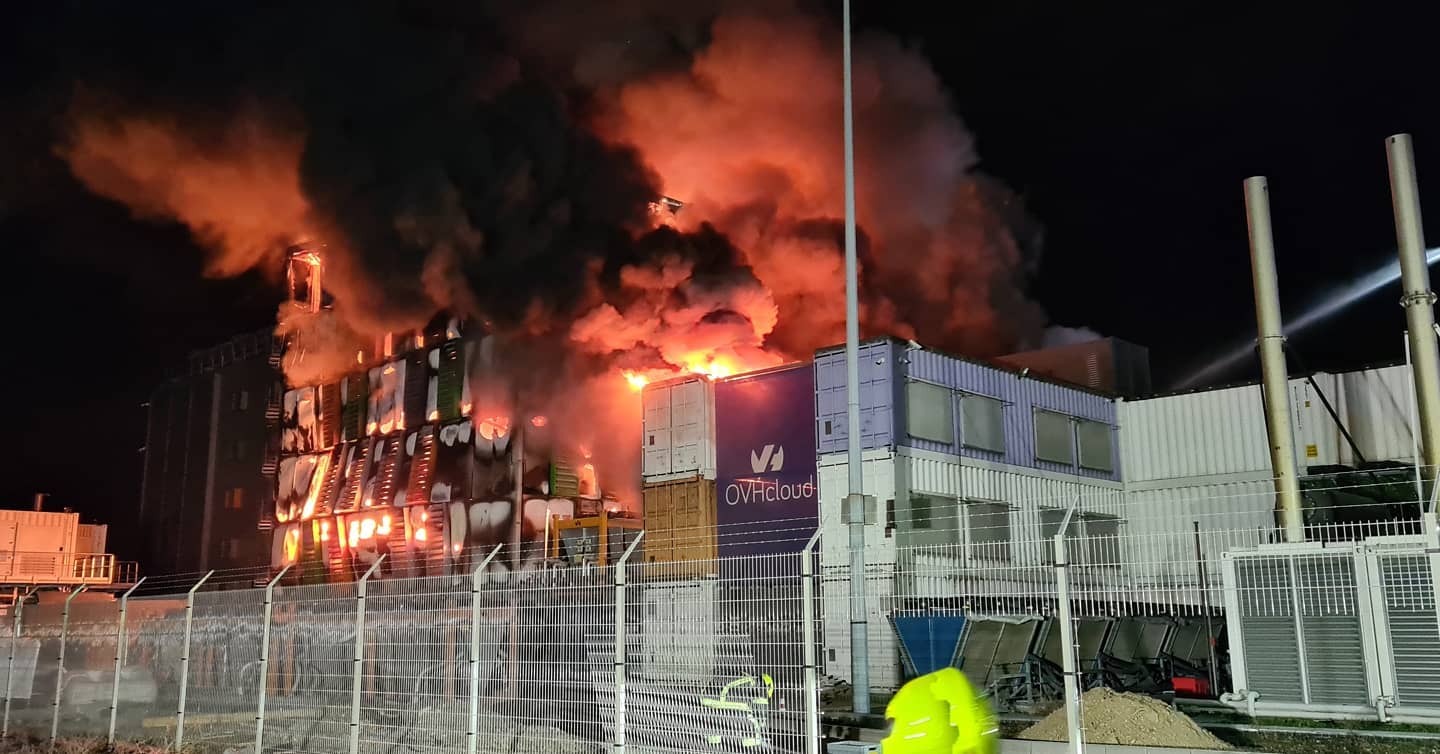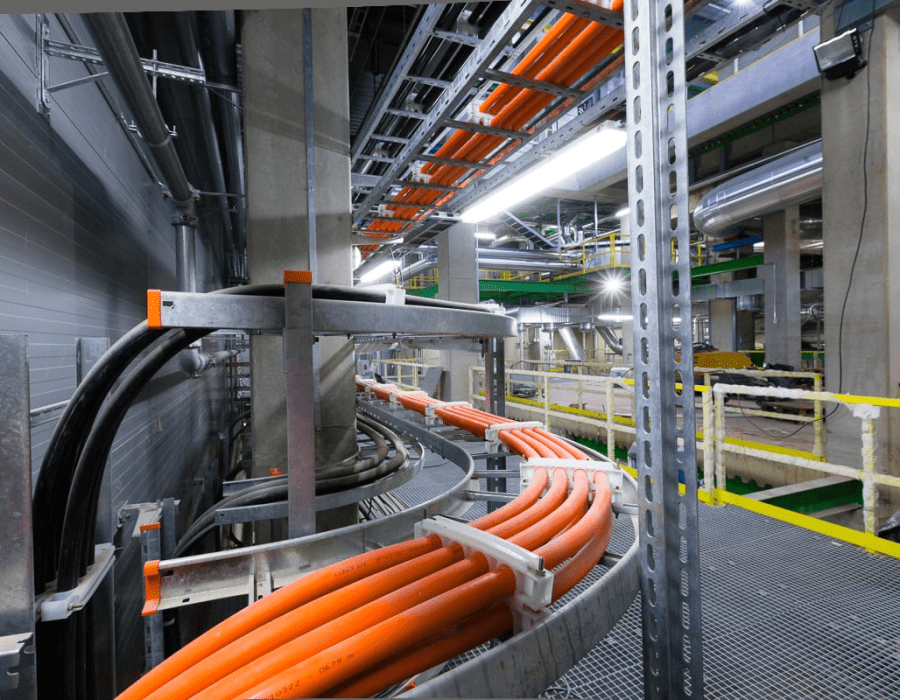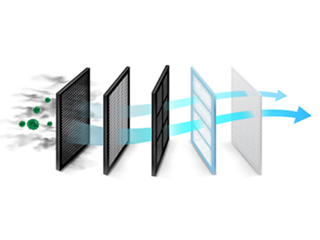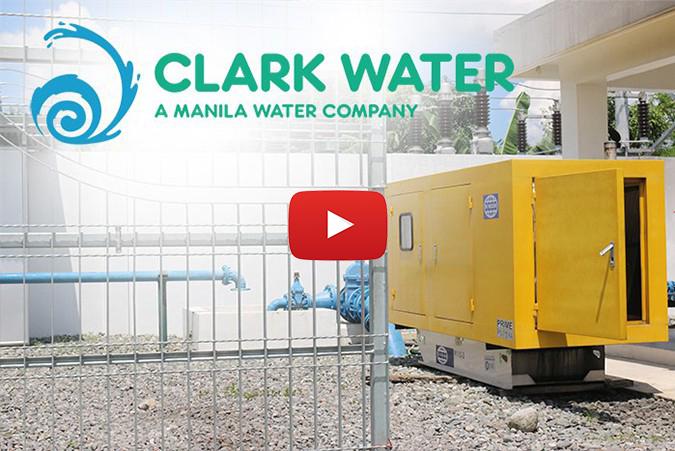Environmental factors are a constant threat to the operation of your data center. A single mishap can cause equipment malfunction and downtime. In the case of Delta Airlines, it happened in August of 2016. Electrical issues and a fire took place in one of their data centers. This event caused flight cancellations nationwide. This doesn’t even take into account the revenue lost because of this fiasco. Monitor the level of threat in your data center with environmental sensors. The capacity for these threats to ruin your business cannot be overstated.
Common Environmental Threats
Fire
- Fires cause around 6% of unwanted downtime in your data center. They are commonly brought about by massive electrical loads. Some other contributors are electrical shorts caused by contaminants or malfunctioning hardware. Smoke, ash, water, and chemical wastes can cause major problems on your site. This is true even when the fire itself has already been put out.

Photo credit: lichess.org
Contaminants
- Contaminants can come from either inside or outside the facility itself. Some data centers sit in densely populated urban areas. These sites can suffer from the invasion of harmful particulates. These contaminants come from outdoor pollution and vehicle exhausts. Those that sit near coastlines need to watch out for saltwater contamination. The air in these parts is heavy with sodium particles. When they enter your data center environment, they condense into salt particles. These particles settle on your delicate electronic equipment. This will cause corrosion and rust which leads to equipment malfunction.
- Contaminants from within can be comprised of lint from clothes. They are also made up of hair fibers and skin particles. Then, there is electronic dust, packing materials, gases, toner dust, metal filaments, paper, fan belt wear, cleaning equipment, and the like. Even ordinary dust consists of 90% dried human skin. So the mere presence of human employees can contribute to contaminants in your area. Environmental threats to your data center can come from items you believe to be harmless. The simple act of opening and closing doors can cause harm. They allow these contaminants to invade your server rooms. This mishap can cause damage to your sensitive electronic gear.
- Some external contaminants are construction dust, pollen, sea salt, pollution, and vehicle exhaust. Sea salt is a killer with its ability to corrode your electrical components. These outside elements are all definite environmental threats to your data center.
Temperature
- Heat management is a major issue in the atmosphere within your data center. One misstep can seriously affect your energy consumption and lead to bloated expenditures. More heat means more electricity to power your fans and coolers. Cost-savers such as DSE-free cooling systems dissipate heat quickly. This can spell savings for your company when accounting time comes. AKCP cooling systems set the world standard for efficiency and reliability. They offer unsurpassed quality with their wide selection of cooling systems. They can prove a major asset in battling environmental threats to your data center.
Moisture and Humidity
- Moisture and humidity are serious issues for data center operators. Allow your data center to get too hot and overheating will occur. Allow it to get too cold and the efficacy and service life of your batteries suffer. Not to mention that both scenarios can cause condensation. This moisture can settle on your electronic equipment. This leads to moisture that can cause serious damage to your worksite.
- Elevated humidity can allow moisture to sit on electronic gear. This can lead to equipment corrosion and malfunction
- Low humidity can cause Electrostatic Discharge (ESD). Electrostatic discharge is the sudden flow of electricity between two electrically charged objects. This occurrence takes place during an electrical short. A build-up of static electricity is caused by electrostatic induction. ESD happens when differently charged objects are brought close together. This creates the spark that we see during shorts. Electronic equipment can suffer permanent damage when subjected to high voltages. This phenomenon can wreak havoc on your data center gear. This is one of the environmental threats to your data center during the cold season.
Power Failure
- Data centers carry a 30% possibility of having power issues if they have been in operation for more than five years. One other contributing factor is if they have gone through several retrofits. Threats of power malfunction not only come in the form of outages and electrical shorts. They can also be caused by an external factor such as lightning.

Photo Credit: www.datacenters.com
How Do Environmental Threats Impact your I.T. Equipment?
From dismal output to total power shutdown, here are some ways that environmental threats to your data center can mess up your operation:
- Physical Interference: Particulates can scuff off the outer layer of electrical components. This happens when particles grind or lodge in the cracks. Think of a piece of sandpaper grinding off a coating of paint on a car.
- Corrosive Failure: Particulates soak up water and gaseous pollutants. These pollutants can interfere with electrical components. They can also rust up the equipment by condensing it into salt solutions. These can settle on the delicate parts of your gear.
- UPS Battery Failure: 37% of UPS shutdowns are caused by battery failures. UPS are designed to operate even in fluctuating temperatures. However, the cold can cause dismal operation and shorten your battery’s life.
- Electrical Shorts: Electrical shorts can cause sporadic outages and equipment failure.
- Thermal Failure: When server parts or filtering devices are full of dust, they often result in cooling fan malfunctions. These malfunctions can lead to overheating.
- Data Corruption: The components of a hard drive will degrade with time. This inevitable occurrence can lead to information being corrupted or lost.
- Reduced Efficiency: Environmental threats to your data center can lead to downtime. These factors can drastically hamper your operational efficacy. Clogged filters can mess up airflow and lessen cooling capacity.
What is Environmental Monitoring?
Environmental Monitoring is a systematic process of watchfulness. This process enables you to safeguard your data center from environmental hazards. Remote monitoring solutions record environmental factors like temperature, humidity, motion, battery life, air contaminants and so much more. AKCP monitoring solutions is the world’s leader when it comes to protecting data centers.
The Advantages of Monitoring Solutions Are:
- Merging with other alarm systems like smoke, vibration, and water leak detectors.
- Identifying variations within the atmosphere being watched.
- Alerts are issued per communications and emergency protocols.
- Automatic responses are activated. For instance, a total shutdown comes into effect when overheating occurs.
- Generates predictive data to avoid future mishaps.
What are Some Common Devices for Data Center Environmental Monitoring?
- PDU: A power distribution unit (PDU) is a device fitted with multiple electrical outputs. They are designed to distribute electric power. They feed this power to racks of computers and networking equipment. This device takes care of obstacles in power protection and management.
- MCU-1-1B Modules and Environmental Sensors: The Electromagnetic Mechanical Clutch Unit (EMCU) is an add-on module that provides additional temperature and humidity probes, door intrusion sensors, as well as water and fluid detection.
- ACM Corrosion Sensor: The Atmospheric Corrosion Monitor (ACM) sensor is a device developed by professor Emeritus Shigeo Tsujikawa of the University of Tokyo. This device enables direct measurement of the corrosion of current metals. This type of corrosion is generated electrochemically by environmental contributors. Direct and quantitative measurement of corrosion is now possible by interpreting the results of the ACM sensor.
- HVAC Cooling Systems: Heating Ventilation and Cooling (HVAC) systems refer to the different systems used for moving air between indoor and outdoor areas. They cool and heat both commercial and residential buildings. In the case of data centers, they are used to regulate temperatures. They operate within computing sites and inside server rooms. These systems ensure that the internal temperature of your data center always remains at optimum levels for smooth operation.
- UPS: An Uninterruptible Power Supply (UPS) is an electrical apparatus that provides emergency power to a load when the input power source fails. A UPS is different from an auxiliary or emergency power system. It provides instantaneous protection from input power interruptions. It does this by supplying energy stored in supercapacitors.
AKCP Data Center Wireless Sensors
There is a wide range of wireless environmental sensors on the market. Typically they are not targeted for use in data center or server room monitoring. AKCP has over 30 years of experience in providing professional sensor solutions for the data center. They took on the challenge of developing wireless environmental sensors that were tailored specifically for monitoring critical infrastructure. They have brought to market the world’s first LoRa based monitoring system with features specifically for the data center. The Wireless Tunnel is a holistic approach to wireless sensor monitoring. It comprises of:
- Wireless Tunnel Sensors
- Wireless Tunnel Gateway-Server
- AKCPro Server
Wireless Environmental Sensors
AKCP created the market for environmental monitoring in the data center. They have a wide range of environmental sensors that cover the needs of large data centers down to small in-house server rooms.
Cabinet Thermal Maps give temperature and humidity values for the front and rear, top-middle-bottom of the server cabinet as well as the front to rear differential temperature readings (ΔT).
The Cabinet Analysis Sensor combines cabinet thermal maps with front and rear differential air pressure (ΔP), suitable for data centers using hot and cold aisle containment. All of these environmental sensors and more are available as part of the Wireless Tunnel system.
Wireless Tunnel Gateway-Server
The sensors require a gateway to communicate with. The Wireless Tunnel Gateway-Server collects and stores data from up to 30 environmental Sensors. In small installations, the Gateway-Server is used as a standalone monitoring system without the need for a cloud server or internet connection. The embedded user interface of the server provides customizable desktops, mapping, and graphing. Alerts are sent via SMS, E-mail, and SNMP Traps. All of the features found in the AKCP sensorProbeX+ user interface are available on the Gateway-Server. These include
- Up to 80x virtual sensors
- SNMPV3
- RADIUS
- VPN
- IPV6
- Tunneling Cloud Service
Wireless Tunnel Server
For larger installations with multiple gateways, a centralized monitoring platform is used to combine the data from all gateways. The Wireless Tunnel Server is a central management platform, AKCPro Server. The server software can be run in-house on your own server or hosted in the cloud. It is a Data Center Infrastructure Management (DCIM) platform with close integration to AKCP environmental sensors.
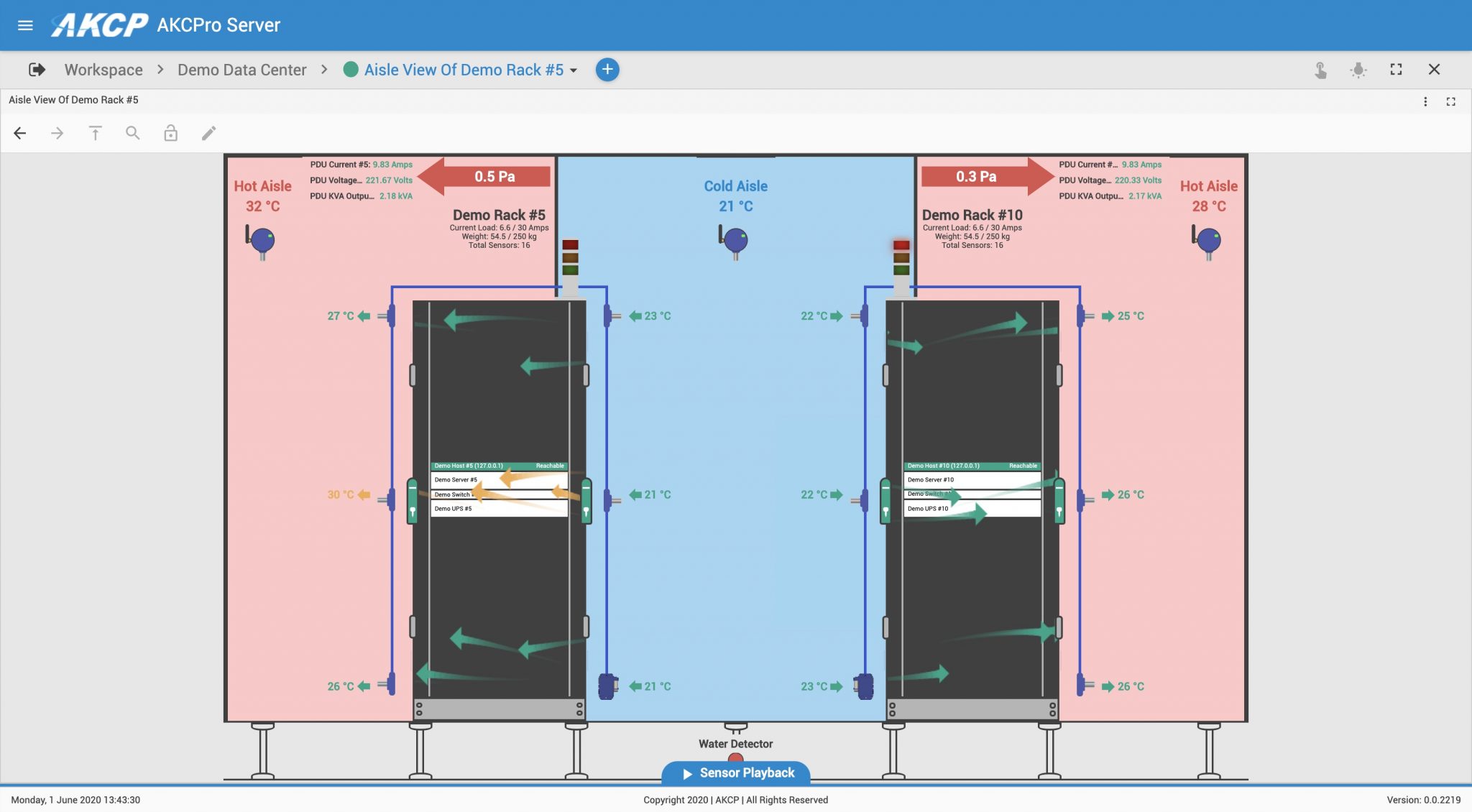
Conclusion
In this article, we have outlined the possible environmental threats to your data center. From something as organic as saltwater contamination that settles on your electronic parts, to something as unpredictable as a lightning strike. The occurrence of fires within your data center has also been mentioned. We also did not neglect to add that temperature fluctuations within your worksite can cause problems. These problems may not only cause downtime but also cut into your revenue stream. We gave you an adequate rundown of threats to your data center. We have also given you a short selection of devices that you can use to battle these harmful elements. We hope that you will utilize the knowledge we have provided. This will guarantee that your data centers operate at optimal capacity at all times. We hope that this article was both informative and helpful.
Reference Links:
https://www.servertech.com/blog/top-tools-for-data-center-environmental-monitoring

